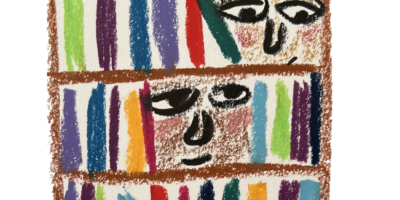
Chicago’s Shofar-Blowing “Rabbi on the Block”
During one sequence in Brad Rothschild’s new documentary Rabbi on the Block, Tamar Manasseh offers a tutorial in shofar-blowing as she readies her community, Chicago Mothers/Men Against Sense- less Killing (known as MASK), to memorialize victims of gun violence. In the run up to Yom Kippur, she explains that the shofar is “calling us to wake up.” Rabbi Manasseh, who not only founded MASK but also became the first woman to be ordained by the International Board of Israelite Rabbis, might herself be considered a shofar. As clergy, teacher, and activist, she calls on a diverse Jewish community to wake up and do the work of tikkun olam.
Rabbi on the Block both continues the story that Rothschild told in his earlier film on Manasseh, They Ain’t Ready for Me, and provides backstory for it. That 2020 documentary provided glimpses of Manasseh’s rabbinical struggles but focused mostly on MASK, which was a community effort to reclaim a crime-ridden block in South Chicago. Now, in Rabbi on the Block, we learn that after seven years of studying, Manasseh viewed MASK as an opportunity to “practice rabbinical skills” on the streets.
According to Manasseh, what the world sees as problems, “Jews see as cracks.” In order to repair the world, you “get your spackle and go to work. You may not fix the cracks but you have to start the work of fixing them.”
MASK is only one of the many spack- ling projects that Manasseh brings to the world. One of the cracks that she seeks to fix is that between Black and white Jews. She bluntly instructs white Jews: “if you haven’t seen a Black Jew, don’t say it out loud.” Throughout the film, we have shots of her integrated Hebrew Israelite congregation where she preaches the need to “deepen understanding of Jews who don’t look like you.”
Similarly, she seeks to apply a layer of spackle to the cracks between non-Jewish Black people and white Jews, asking whether the so-called Black antisemitism of basketball player Lebron James, writer Alice Walker, and Women’s March organizer Tamika Mallory is as deep and as scary as the Jew-hatred on display at Charlottesville. Her rabbinical argument against assimilation and for Jewish continuity is refreshingly ethical and non- tribal. Identifying racism as “the American disease,” she admonishes Jews that when we “become just American and forget our Jewishness, we’re our worst selves.”
Her son’s experience at the Jewish day school where she learned to be a bridge between communities exemplifies white Jews being their worst selves. At one point, Akiba-Schechter Jewish Day School was welcoming. However, the overt and subtle racism that her son expe- rienced there ranged from being denied a math textbook to being told in the Obama era that he shouldn’t run for student body president because he should “give the job to a white guy for once!” The discriminatory treatment endured by her son led to a civil lawsuit that Manasseh won.
Manasseh also won her battle to become the first woman to receive smicha (ordination) from the International Israelite Board of Rabbis. Although she was a star student at the Israelite Academy, the Board initially refused to vote on her case and then when they did hold votes, some members of the Board continued to with- hold their support. Finally, Rabbi Capers Funnye, her rabbi at Beth Shalom Bnai Zaken Ethiopian Hebrew Congregation, determined that he and Beth Shalom were going to make history by ordaining her.
Manasseh’s 13-year rabbinical journey offers a lesson on the history and the diversity of Black Hebrew Israelites. While some congregations are messianic, others like Manasseh’s are not “mixed in with Christianity.” The ordination of Manasseh is one of many moving sequences in the film. Wearing the precious tal- lit of her uncle, who did not live long enough to pursue his own ordination, Rabbi Manasseh announced a scholarship named after him, the David McCullough Jewish Education Fund for Black Jews, to “change the face of Judaism.”
One of the most poignant scenes occurs during a brit milah (circumcision ceremony). Officiating this lifecycle ritual, Manasseh invites the congregation to stand and to pledge to “act as guardians” for this Black boy. Non-Black congregants were specifically called in to “look out and advocate for him.” By yok- ing together alliance politics and sacred rituals, Manasseh provides a path for diverse Jews to strengthen one another.
Rabbi on the Block won the Audience Award for Best Documentary at the 2023 San Francisco Jewish Film Festival, where it premiered. In upcoming months, it will be shown at major Jewish film festivals across the country. This compelling vision of Jewish continuity and change is itself a form of spackling that will inspire viewers to do Jewish repair work in the world.
Helene Meyers is author of Movie-Made Jews: An American Tradition.



